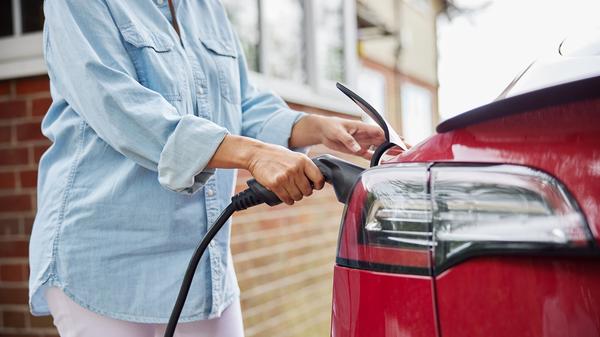Advice
How do electric cars work?
Find the answers to all your electric car-related questions, from ‘what is an electric vehicle’ to ‘how EVs work’ and ‘are electric cars automatic’
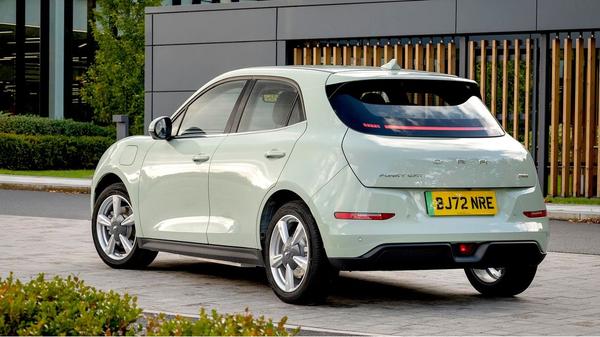

Words by: Nimisha Jain

Additional words by: Mark Nichol
Last updated on 9 January 2026 | 0 min read
What is an electric car?
Electric cars are those powered solely by an electric motor instead of an internal combustion engine (ICE). They’re known as electric vehicles (EVs), battery electric vehicles (BEVs), or sometimes ‘fully electric cars’. This is to distinguish them from hybrid and plug-in hybrid vehicles, which use a combination of internal combustion and electric power. We’ll explain more about that below.
A petrol or diesel car uses an internal combustion engine and a fuel tank to send power to the wheels through a manual or an automatic gearbox. An electric car, on the other hand, uses an electric motor powered by a battery pack, and usually a single-speed transmission rather than a standard gearbox. That means that an EV feels just like an automatic car to drive, using only an accelerator and a brake pedal. Read on for more detail on exactly how electric cars work.
A petrol or diesel car uses an internal combustion engine and a fuel tank to send power to the wheels through a manual or an automatic gearbox. An electric car, on the other hand, uses an electric motor powered by a battery pack, and usually a single-speed transmission rather than a standard gearbox. That means that an EV feels just like an automatic car to drive, using only an accelerator and a brake pedal. Read on for more detail on exactly how electric cars work.
How do electric cars work?
When an electric car is switched on, the motor takes power from the battery and gets the car moving.
When an electric car is plugged into a charging point, the car’s battery pack draws energy and then stores it to power the car. The ‘range’ of an EV - the measure of how many miles it will travel from a full battery - depends mainly on the capacity of its battery. The higher the capacity (measured in kilowatt hours, or kWh for short), the greater the range - although as you’ll see, that’s not the only determining factor.
When an electric car is plugged into a charging point, the car’s battery pack draws energy and then stores it to power the car. The ‘range’ of an EV - the measure of how many miles it will travel from a full battery - depends mainly on the capacity of its battery. The higher the capacity (measured in kilowatt hours, or kWh for short), the greater the range - although as you’ll see, that’s not the only determining factor.

What types of electric car are there?
In recent times, carmakers have turned to electric power to make their petrol and diesel vehicles more efficient, which is why we have ‘hybrid’ cars as well as fully electric vehicles. You can find out much more detail on the types of hybrids in this article, but here’s a summary of all the types of electric vehicle and the differences between them.
Fully Electric Vehicles (EV)
Any vehicle that doesn’t use an internal combustion engine to drive the wheels is classed as an EV. There are variations between electric cars - some use only one electric motor to power the front or rear wheels, while others have two or more electric motors - but they all have one thing in common: they don’t burn any fuel to move.Range Extender Electric Vehicles
Range extender electric cars are rare, but they’re a sort of hybrid that use a petrol engine as a generator to power a battery pack and electric motor. The petrol engine never actually drives the wheels. Instead, the electric motor does, but the car is fuelled in the same way a standard petrol car is. The idea is to give the feeling of an EV - quick and quiet acceleration - but without the need to plug the car in to charge. The Nissan Qashqai e-power uses this setup, as does the BMW i3 Range Extender.Plug-In Hybrid Vehicles (PHEV)
Plug-in hybrids are very popular because they’re seen as a stepping stone between a petrol or diesel car and a fully electric one. They use a petrol (or occasionally diesel) engine and an electric motor, linked to a smaller battery pack than you’d normally find in a fully electric car - but which still needs to be plugged in to keep fully charged. A PHEV can use the engine and the electric motor together to drive the wheels, or each can do the job individually. That’s why PHEVs have an ‘electric-only range’, usually somewhere between 20 and 50 miles, and why they can keep going when the battery runs out of charge. To drive, they feel the same as any automatic car, with the car itself determining which power source to use at any given time. Click here to see our favourite plug-in hybrid vehicles.Hybrid Electric Vehicles (HEV)
Like PHEVs, hybrid electric vehicles (usually just called “hybrids”) also use an internal combustion engine linked to an electric motor and a battery, but the main difference is that they can’t be plugged in. The battery, which is much smaller than you’d find in an EV or a PHEV, is kept charged by the fuel engine only. That’s why you’ll sometimes hear this sort of hybrid referred to as a “self-charging hybrid”. The smaller battery means that the electric-only range is minimal too - usually only one or two miles and at low speeds - but the hybrid setup means they’re more efficient than a standard petrol car. The Toyota Yaris hybrid, for instance, has between 60-70 mpg efficiency rating. Click here to see our favourite hybrid cars.Mild Hybrid Vehicles (MHEV)
Mild hybrids have a small additional electrical system that assists the petrol or diesel engine to improve fuel efficiency. Unlike other types of hybrid, a mild hybrid system cannot use electricity alone to drive the wheels of the car. A small electric motor is used to help power the engine when accelerating, as well as allowing the car to shut down the engine and ‘coast’ when the driver lifts off the throttle in certain conditions. A mild hybrid system is a cost-effective way of adding a few miles-per-gallon to a ‘conventional’ petrol or diesel car. Check out Rory’s comparison video on running costs for hybrids, plug-in hybrids and fully electric cars here.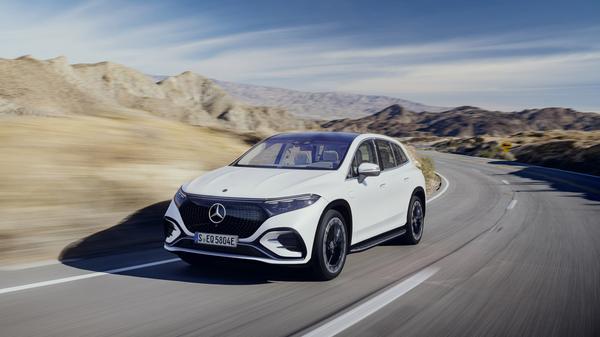
Electric Car Batteries
Electric cars use batteries that are fundamentally the same as those found in smartphones. Multiple cells are bundled together to form the battery, which is usually packaged in a thin rectangle shape under the floor, between the front and rear axles. The vast majority of electric cars use a lithium-ion battery, like your phone’s, but carmakers are constantly experimenting with different technology and materials, which means EV batteries are advancing all the time.
EV battery capacity is measured in kilowatt hours (kWh), which roughly determines how many miles the EV will go on a single charge. But as with a petrol or diesel car, not all EVs are equally efficient, with factors like weight, aerodynamics and performance determining how many miles they’ll get per kWh of energy. You might see that some carmakers quote ‘usable’ battery range, which is the proportion of the total battery capacity dedicated to driving the wheels themselves. Some of an EVs overall battery capacity is preserved for the car’s electrical systems, and as a safety measure to prevent a battery from completely draining, which can shorten its life or damage it. Click here to read our dedicated ‘electric car batteries explained’ article.
EV battery capacity is measured in kilowatt hours (kWh), which roughly determines how many miles the EV will go on a single charge. But as with a petrol or diesel car, not all EVs are equally efficient, with factors like weight, aerodynamics and performance determining how many miles they’ll get per kWh of energy. You might see that some carmakers quote ‘usable’ battery range, which is the proportion of the total battery capacity dedicated to driving the wheels themselves. Some of an EVs overall battery capacity is preserved for the car’s electrical systems, and as a safety measure to prevent a battery from completely draining, which can shorten its life or damage it. Click here to read our dedicated ‘electric car batteries explained’ article.
How far can electric cars go?
To give you an idea of how quickly EV battery tech is progressing, the first Nissan Leaf in 2010 had a 24kWh battery and a real-world range of around 60 miles. The 2026 Mercedes-Benz EQS Saloon has a 120kWh battery, with a 481-mile quoted range.
You’ll notice we used ‘real-world’ and ‘quoted’ ranges there. The two are different. Quoted range is the official number given by car manufacturers based on the WLTP test that all cars go through. It’s used to give a fair like-for-like comparison of efficiency, but because it’s done on a rolling road in a lab, for consistency, it doesn’t take into account all the variables of real world driving, including weather, traffic, driving style and the additional weight of passengers and luggage. These all have a big effect on real-world range. So, you should use WLTP’ battery range numbers as a guide only. To give yourself a rough estimate of real-world range, you can reduce the quoted WLTP figure by around 20-25%. You can learn much more about this in our ‘electric car range explained’ article . Battery sizes vary significantly, but predictably it tends to be that higher priced or bigger EVs have larger batteries, and vice versa. At one end of the scale, the Honda e city car has a 35kWh battery and a WLTP range of 137 miles, and at the other the aforementioned Mercedes-Benz EQS has a battery and a range more than three times that. Currently, the average size of the battery in an electric car is around 50-70kWh. The Vauxhall Corsa Electric, for instance, has a 50kWh battery and a 222-246 mile quoted range. If you’re looking for the EVs with the best range, check out our picks here .
You’ll notice we used ‘real-world’ and ‘quoted’ ranges there. The two are different. Quoted range is the official number given by car manufacturers based on the WLTP test that all cars go through. It’s used to give a fair like-for-like comparison of efficiency, but because it’s done on a rolling road in a lab, for consistency, it doesn’t take into account all the variables of real world driving, including weather, traffic, driving style and the additional weight of passengers and luggage. These all have a big effect on real-world range. So, you should use WLTP’ battery range numbers as a guide only. To give yourself a rough estimate of real-world range, you can reduce the quoted WLTP figure by around 20-25%. You can learn much more about this in our ‘electric car range explained’ article . Battery sizes vary significantly, but predictably it tends to be that higher priced or bigger EVs have larger batteries, and vice versa. At one end of the scale, the Honda e city car has a 35kWh battery and a WLTP range of 137 miles, and at the other the aforementioned Mercedes-Benz EQS has a battery and a range more than three times that. Currently, the average size of the battery in an electric car is around 50-70kWh. The Vauxhall Corsa Electric, for instance, has a 50kWh battery and a 222-246 mile quoted range. If you’re looking for the EVs with the best range, check out our picks here .
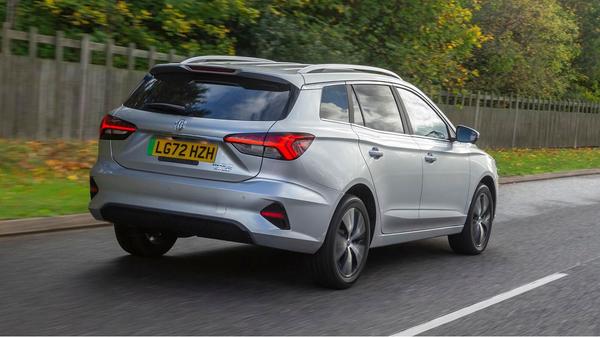
How efficient is driving an electric car?
Electric cars vary in efficiency from model to model, just like petrol or diesel cars do, but because overall battery range is the main concern for most drivers (for obvious reasons), we tend not to talk about EV efficiency much. It’s very important though. Imagine finding out that your petrol car does 500 miles from a tank of fuel, but then realising that’s because its entire boot is a fuel tank and it only actually does eight miles per gallon.
Thankfully, electric motors are by nature a lot more efficient than internal combustion engines (petrol or diesel), because internal combustion engines waste a lot of the fuel’s energy just to move the parts of the engine. The heat generated inside an engine is lost energy, too. An electric motor has very few moving parts and doesn’t generate anywhere near as much heat in operation, so much more of the energy from the battery is used to actually turn the car’s wheels. The numbers vary from car to car, but even the most efficient diesel engine will only use around 40% of its fuel’s potential energy at the wheels. By contrast, electric motors can be around 90% efficient. In addition, an EV’s ‘brake energy recapture’ system will claim back some of the energy ordinarily lost as heat when braking and feed that back into the battery. You can’t do that with a combustion engine and fuel tank. You should think about efficiency in terms of miles-per-kilowatt hour (kWh), which is a simple measure of how many miles an EV will travel per kWh taken from the battery. Because electricity units are costed in kilowatts, this is a great way of seeing how much your driving is actually costing. Most electric cars will show you this readout on their screens, but you can work it out yourself.
Thankfully, electric motors are by nature a lot more efficient than internal combustion engines (petrol or diesel), because internal combustion engines waste a lot of the fuel’s energy just to move the parts of the engine. The heat generated inside an engine is lost energy, too. An electric motor has very few moving parts and doesn’t generate anywhere near as much heat in operation, so much more of the energy from the battery is used to actually turn the car’s wheels. The numbers vary from car to car, but even the most efficient diesel engine will only use around 40% of its fuel’s potential energy at the wheels. By contrast, electric motors can be around 90% efficient. In addition, an EV’s ‘brake energy recapture’ system will claim back some of the energy ordinarily lost as heat when braking and feed that back into the battery. You can’t do that with a combustion engine and fuel tank. You should think about efficiency in terms of miles-per-kilowatt hour (kWh), which is a simple measure of how many miles an EV will travel per kWh taken from the battery. Because electricity units are costed in kilowatts, this is a great way of seeing how much your driving is actually costing. Most electric cars will show you this readout on their screens, but you can work it out yourself.
Do all electric cars have zero emissions?
In short, yes. All fully electric vehicles are essentially ‘zero emissions cars’. They’re called that because they don’t spit out the emissions that petrol and diesel cars do, which emit waste gasses from the exhaust pipe after burning fuel in the engine’s cylinders. These gases, including CO2 and NOx, are known to be harmful. EVs don’t even have an exhaust system because electricity doesn’t produce any waste products.
That’s not the full picture, though. For a start, an electric car still has brake discs and rubber tyres, which both emit particles as they wear down through use. And every EV has a ‘carbon footprint’ through the course of production. It takes energy to acquire and transport the materials for the batteries and the components, and to ship the cars themselves. Hybrid cars produce tailpipe emissions too, from their internal combustion engines. Manufacturers are working on making the ‘well-to-wheel’ emissions of their electric cars as eco-friendly as possible, though. This includes developing batteries that use less cobalt, which is notoriously labour intensive to gather, and powering their factories using green, sustainable energy sources. Volvo, for example, has calculated that its efforts to reduce emissions in the production of the EX30 electric car mean its overall carbon footprint will be 25% less than a Volvo XC40 EV’s, when both cars reach 125,000 miles. Read more about electric car emissions in our ‘how green are electric cars’ article .
That’s not the full picture, though. For a start, an electric car still has brake discs and rubber tyres, which both emit particles as they wear down through use. And every EV has a ‘carbon footprint’ through the course of production. It takes energy to acquire and transport the materials for the batteries and the components, and to ship the cars themselves. Hybrid cars produce tailpipe emissions too, from their internal combustion engines. Manufacturers are working on making the ‘well-to-wheel’ emissions of their electric cars as eco-friendly as possible, though. This includes developing batteries that use less cobalt, which is notoriously labour intensive to gather, and powering their factories using green, sustainable energy sources. Volvo, for example, has calculated that its efforts to reduce emissions in the production of the EX30 electric car mean its overall carbon footprint will be 25% less than a Volvo XC40 EV’s, when both cars reach 125,000 miles. Read more about electric car emissions in our ‘how green are electric cars’ article .
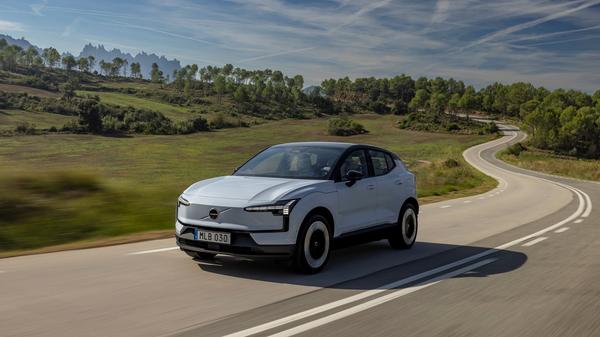
Do electric cars have an engine?
Fully electric cars don’t have an internal combustion engine, although as explained above, hybrids do. EVs run using one or more electric motors to drive the wheels. Most EVs tend to have a basic setup not dissimilar to a petrol or diesel car, in that there’s a single motor driving either the front or the rear wheels, powered by an energy source - a battery in this case, as opposed to a fuel tank.
The difference comes with four-wheel drive (4x4) EVs. Unlike a petrol or diesel car, where a single engine will power all four wheels using driveshafts, an EV tends to have an extra motor to do the same job - one for the front wheels and one for the rear. This is because an electric motor is far simpler and more compact than an internal combustion engine, and can be controlled instantly using electrical signals - a central computer ‘brain’, if you like. Higher performance EVs often have two electric motors. The Tesla Model S, Audi e-tron GT, BMW iX and Jaguar I-Pace are a few examples. Some EVs have even higher performance capabilities, using three motors - ‘Plaid’ spec Teslas, for instance - and it’s actually possible to have a motor for each wheel. The Rimac Concept_One has this setup.
The difference comes with four-wheel drive (4x4) EVs. Unlike a petrol or diesel car, where a single engine will power all four wheels using driveshafts, an EV tends to have an extra motor to do the same job - one for the front wheels and one for the rear. This is because an electric motor is far simpler and more compact than an internal combustion engine, and can be controlled instantly using electrical signals - a central computer ‘brain’, if you like. Higher performance EVs often have two electric motors. The Tesla Model S, Audi e-tron GT, BMW iX and Jaguar I-Pace are a few examples. Some EVs have even higher performance capabilities, using three motors - ‘Plaid’ spec Teslas, for instance - and it’s actually possible to have a motor for each wheel. The Rimac Concept_One has this setup.
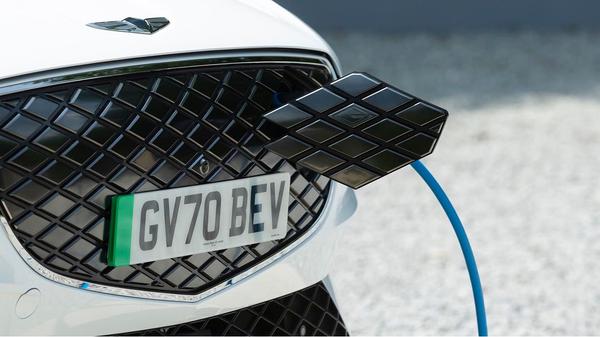
Do electric cars have gearboxes?
Most battery electric cars have a single-speed gearbox. Diesel and petrol cars need a multi-ratio gearbox to increase road speed because they reach peak torque and power within a narrow band of engine speed - engine speed being the number of rotations the crankshaft can physically handle, measured in revolutions per minute (rpm). Think of it like riding a mountain bike and how much easier it is to gather pace when you’re using the gears. There’s a limit to how quickly you can physically cycle the pedals, so the gearbox maximises your efforts. Electric cars, on the other hand, deliver peak torque at any rpm and can spin much faster than an internal combustion engine - some up to 30,000rpm - which is why most electric cars use a single-speed transmission. It’s simple and it provides a good balance between acceleration and top speed. To go back to the cycling analogy, an electric car is like a riding a BMX with a powerlifter’s leg strength. No need for a gearbox to get up that steep hill.
Are all electric cars automatic?
Electric cars aren’t technically ‘automatic’ in the same way a petrol or diesel car is. But in practice they feel the same as an automatic to drive, in that they have an accelerator and a brake pedal, but no clutch or gear lever. If you’ve ever driven an automatic car, you’ll be familiar with the drive selector of an EV, which will typically include D, R and P modes: drive, reverse and park. Some will have a B mode too, which stands for ‘braking’ and activates the car’s regenerative braking system - a feature that slows the car down when you lift off the accelerator, then recovers the kinetic energy to recharge the battery.
Since EVs have a single gear, they don’t even have a reverse gear. The electric motor can rotate clockwise and anti-clockwise at the same speed. This also means that, in theory, an electric car can go forward and backwards at the same speed if the speed limiter is removed in reverse mode. You can see this in action in our Tesla Model 3 vs. Polestar 2 drag race.
Since EVs have a single gear, they don’t even have a reverse gear. The electric motor can rotate clockwise and anti-clockwise at the same speed. This also means that, in theory, an electric car can go forward and backwards at the same speed if the speed limiter is removed in reverse mode. You can see this in action in our Tesla Model 3 vs. Polestar 2 drag race.
Is it difficult to drive an electric car?
Absolutely not. It’s the easiest driving experience imaginable. Firstly because you never need to change gears, and secondly because all electric cars feel super responsive when you press the accelerator. This is in contrast to most internal combustion engines - even the most powerful petrol or diesel cars take time to ‘spool up’ and hit their peak torque higher up the rev range.
Are electric cars fun to drive?
It’s true that ‘‘petrolheads’ will always love the sound and the feel and the unique character of an internal combustion engine, but electric cars are a lot of fun to drive in their own way.
For a start, even a low-powered electric car will feel relatively quick from the get-go. It’s torque that governs acceleration, because torque is a measure of turning force - the force that can be applied to turning the wheels. The more torque, or the lower in the rev range that peak torque comes, the quicker a car will feel when accelerating or pulling away. Electric motors develop all their torque immediately - as soon as you press the accelerator - which is what makes an electric car feel quick. But don’t worry, you’re not going to shoot uncontrollably into the horizon in a Vauxhall Corsa Electric the moment you put your foot down! Manufacturers limit the amount of torque that their electric motors have to make their EVs feel comfortable to drive. Still, this characteristic gives EVs a unique feeling to drive, a sense of alertness and control that you just don’t get with the vast majority of internal combustion cars. It makes them great city cars because they respond that much more sharply to your accelerator movements, which is great in busy urban situations. It also means that some electric cars are shockingly quick. The Tesla Model S Plaid, for instance, will hit 62mph in less than two seconds, and even a sensible family SUV like the Volvo EX30 can get to 62mph quicker than a Ferrari. Check out our high performance EV drag race here to see just how quick some electric cars actually are these days. Since EVs use a single-speed transmission, some feel that the driving experience isn’t as engaging or involving as a traditional ICE car with a manual gearbox. For many, a manual gearbox is a fundamental part in a rewarding drive: the feel of changing gears, and having full control over the power delivery, the sound and the behaviour of the vehicle. We can see both sides. On a twisty b-road or a track, there’s no replacing the feel of a good manual gearbox - the one in a Porsche Cayman, say - but a lot of people would agree that manual gearboxes aren’t ideal for a traffic jam-laden work commute. EVs make that ordinary stuff a lot more relaxing. And in any event, manual gearboxes are falling out of favour. 2020 saw uptake of new automatic cars surpass manuals for the first time in the UK and the trend is continuing. A lot of drivers feel that driving is actually more fun when all you have to focus on is steering and braking, basically - the go-kart way, if you like.
For a start, even a low-powered electric car will feel relatively quick from the get-go. It’s torque that governs acceleration, because torque is a measure of turning force - the force that can be applied to turning the wheels. The more torque, or the lower in the rev range that peak torque comes, the quicker a car will feel when accelerating or pulling away. Electric motors develop all their torque immediately - as soon as you press the accelerator - which is what makes an electric car feel quick. But don’t worry, you’re not going to shoot uncontrollably into the horizon in a Vauxhall Corsa Electric the moment you put your foot down! Manufacturers limit the amount of torque that their electric motors have to make their EVs feel comfortable to drive. Still, this characteristic gives EVs a unique feeling to drive, a sense of alertness and control that you just don’t get with the vast majority of internal combustion cars. It makes them great city cars because they respond that much more sharply to your accelerator movements, which is great in busy urban situations. It also means that some electric cars are shockingly quick. The Tesla Model S Plaid, for instance, will hit 62mph in less than two seconds, and even a sensible family SUV like the Volvo EX30 can get to 62mph quicker than a Ferrari. Check out our high performance EV drag race here to see just how quick some electric cars actually are these days. Since EVs use a single-speed transmission, some feel that the driving experience isn’t as engaging or involving as a traditional ICE car with a manual gearbox. For many, a manual gearbox is a fundamental part in a rewarding drive: the feel of changing gears, and having full control over the power delivery, the sound and the behaviour of the vehicle. We can see both sides. On a twisty b-road or a track, there’s no replacing the feel of a good manual gearbox - the one in a Porsche Cayman, say - but a lot of people would agree that manual gearboxes aren’t ideal for a traffic jam-laden work commute. EVs make that ordinary stuff a lot more relaxing. And in any event, manual gearboxes are falling out of favour. 2020 saw uptake of new automatic cars surpass manuals for the first time in the UK and the trend is continuing. A lot of drivers feel that driving is actually more fun when all you have to focus on is steering and braking, basically - the go-kart way, if you like.
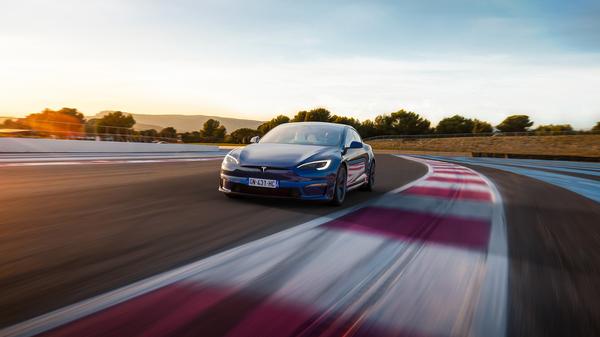
Do electric cars make any noise when driving?
Electric motors make a lot less noise than a conventional petrol or diesel, to the point that it’s normally drowned out by other noise, like the roar from the tyres going over the road, or wind blowing over the car. As a result, many countries have made it mandatory for EVs to be fitted with an acoustic vehicle alerting system (AVAS), or a warning sound system to alert vulnerable road users. This is especially vital in car parks and other situations where pedestrians and vehicles mix.
How do you charge an electric car?
You can charge electric cars both at home and whilst you're out and about.
Learn more about charging your electric car at home or charging an electric car using a charging station. Wherever you charge your car, you’ll use one of three types of charging point: slow, fast or rapid. Find out more about these different types of chargers.
Learn more about charging your electric car at home or charging an electric car using a charging station. Wherever you charge your car, you’ll use one of three types of charging point: slow, fast or rapid. Find out more about these different types of chargers.
You can learn more about electric cars or browse from thousands of new and used electric cars on Autotrader.
We’re also giving away a free electric car each month – all you need to do is enter our giveaway and stand the chance to drive away an electric car for free.
We’re also giving away a free electric car each month – all you need to do is enter our giveaway and stand the chance to drive away an electric car for free.
